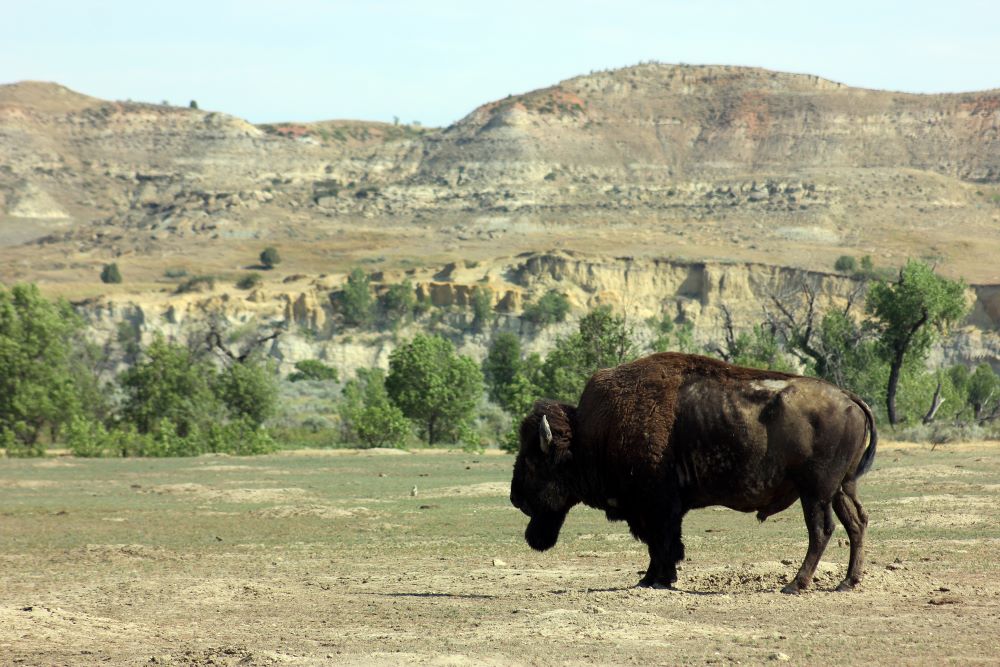
On the banks of the Yellowstone river, just a few miles from the Montana/Wyoming border, sits a 100-year old stone arch. Across the top are the words, “For the Benefit and Enjoyment of the People.” The words on the arch remind all who enter the lands beyond it that Yellowstone National Park, the first of its kind in the world, was set aside for all of us not only to enjoy but preserve for those who come after us.
The 423 individual units that make up our National Park system are places to recreate and to make treasured memories, but they are also places that inspire wonder and encourage learning. The mission of the National Park Service is to “preserve unimpaired the natural and cultural resources and values of the national park system for the enjoyment, education, and inspiration of this and future generations.” To this end, parks across the country create materials and experiences to help learners of all ages learn about these amazing places and the stories they tell.
While visiting a park leads to unforgettable experiences, you don’t need to live within driving distance to benefit from the learning opportunities National Parks provide. The right resources and learning pathways can help students even hundreds of miles away make real-world connections to distant parks without ever having to visit, and understand how they can help preserve them. As conservationist Marjory Stoneman Douglas reminds us, “To be a friend of the Everglades is not necessarily to spend time wandering around out there.”
In honor of National Parks Week, (April 16th-24th) here are a few ways that National Parks can help support Gold Standard PBL projects:
1) Key Knowledge, Understanding, and Skills
A good place to start is the NPS Educator Portal, where you can search through thousands of resources aligned to the Common Core and other standard frameworks like the NGSS. Each resource is connected to a specific park unit, so if you find a resource that aligns to the learning goals for your next project, you also have a potential connection to outside expertise in the form of a member of the park’s educational staff.
For example, I was recently working with a math teacher in southern Arizona who loved National Parks but wasn’t convinced there was a place for them in her upcoming unit on algebraic equations. After searching the standards in the portal she discovered that the rangers at Saguaro National Park use algebraic equations to calculate the age of the iconic Saguaro Cactus. “I was just there this weekend!” she exclaimed. One simple search provided her with standards-aligned resources for a project focused on measuring the health of the park’s cacti population by determining their median age–connecting what goes on inside school to what her students saw every day outside!
2) Challenging Problem or Question
Gold Standard projects are built around challenging and engaging problems that students investigate during the course of the project. Research suggests that people are more engaged when they are contributing to solutions for others rather than themselves. Designing projects where students know their efforts are contributing to the well-being of others are therefore a great engagement strategy.
One of the most endangered parks in the country is Everglades National Park. Nearly flat and surrounded on three sides by ocean water, the effects of climate change are wreaking havoc on this expansive subtropical wilderness. At the same time, the exponential growth of southern Florida threatens to divert vital water from this already overtaxed ecosystem, creating a resource tug-of-war between the area’s human and natural needs. Both of these problems are complex, challenging, and perfect as a focus for environmental science PBL projects.
A driving question like, “How do we strike a balance between the needs of people and nature?” can focus students on how different interests and societal needs can impact ecosystems like the Everglades.
Students from other parts of the country can also use the Everglades as a case study as they make connections to how their own communities are dealing with issues of water rights and climate change.
3) Authenticity
Students engaged in sustained inquiry often come up with questions that push the limits of their teachers’ subject matter knowledge. Trying to answer these questions can be hard enough, and creating activities and instructional sequences that help students find these answers themselves is often too time-consuming. But what if someone else did the hard work for you?
National Park Rangers are content experts who often engage in fieldwork that can be drawn upon to answer even the most specific of student questions. Since parks are mission-driven to connect with classrooms whenever possible, many are willing and able to set up remote learning opportunities with learners just like yours. Opportunities to connect with rangers can be found in the Distance Learning directory within the NPS Educator Portal.
For example, if you have a group of curious and engaged students who have a mountain of questions about why the Grand Canyon is so deep, or how the different colors on its walls got there, and all you can think is, “I wish there was a park ranger here that could answer all these questions…” you’re in luck! There is a distance learning program for that!
If the park you are focusing on doesn’t have a distance learning program listed online, consider reaching out to the park directly and requesting a virtual visit. Many parks are open to setting up a video chat even if they don’t have a dedicated program listed on the web. This might also create an opportunity for students to receive feedback from a knowledgeable professional regarding the development of their public product.

